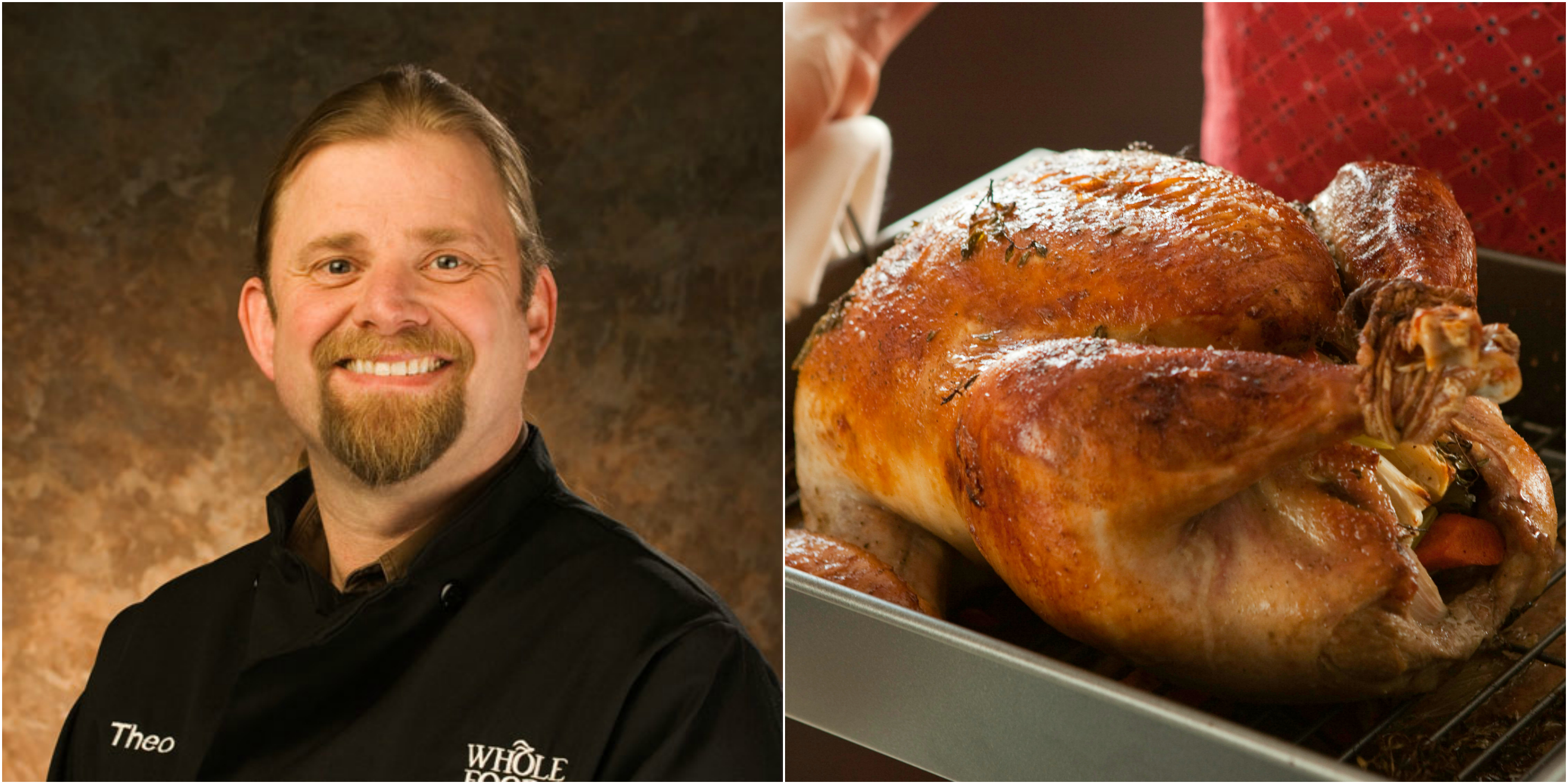Thanksgiving Turkey 101 With A Certified Expert

Theo Weening offers up some expert advice on tackling Turkey Day preparation this year.
Theo Weening certainly won't be panicking in the kitchen this Thanksgiving. Drawing on his work experience in his father's meat shop in Holland and a stint as a cook in the Dutch Air Force, Weening emigrated to the United States and became Whole Foods Market's global meat buyer in 1992. His intricate knowledge of raising practices and preparation techniques and his dedication to the art of butchery have made him one of the nation's leading authorities on quality meats. With Thanksgiving fast approaching, we caught up with Weening to talk all things turkey. We even managed to make it the entire interview without bringing up his starring role in Whole Foods' ambitious photo shoot. But now we know what the "Fabio of Meat" looks like.
Should we be buying fresh or frozen? What's the main difference?
Of course, fresh! It makes a big difference. The cooking time can vary quite a bit – a 10-12 pound turkey can be cooked 25 minutes to an hour quicker than a frozen turkey or one that's been called "fresh" but has been processed.
What are the main disadvantages of a frozen turkey?
You lose some of the flavor and you have to deal with the ice crystals in it. People want to know where their turkey came from, who raised it and how it was raised. Thanksgiving is only once a year, and people should have the best of the best. If you have to buy a frozen one, do it, but in general, buy fresh because there is a huge difference.
Why do people buy frozen turkeys?
People who are traveling will buy one frozen, so that they don't have to put it in a cooler.
What's a simple way to thaw it?
You have to do it slowly. Buy it three days before Thanksgiving – or take it out of the freezer three days before – and stick it in the bottom of the fridge. Some people put it under water. If you have the time, though, stick it in the bottom of the fridge and really do it slowly, because that's the best way.
Can you go over the differences between heritage birds and organic birds?
A heritage is an older breed. They are bred the natural way and are not artificially inseminated. There's not a lot of breast meat in the heritage — it's a lot more bone than meat, even though it's a great-flavored bird. A lot of customers who buy it, though, don't understand that it's completely different than a "regular" turkey. That's why we recommend buying an organic, antibiotic-free, free-range turkey. Additionally, you can always have a heritage turkey on the side. It's fun to sit at the table and say, "Hey, this is a heritage turkey!"
How large of a turkey should people look to buy? Do you have a pound to people formula?
It depends on the party. I'll always say that if you're going to go through all the trouble of cooking and stuffing and such, you might as well get an 18-20 pound turkey. It looks nice, doesn't break your back carrying it and it still fits in the oven. I've even gotten that size for family parties with five or six people, even though a 10-12 pounder would probably serve everyone just fine. Come on, why not have a little extra for the next few days!
What is your personal favorite stuffing?
That's always an argument in our house! My wife is from the Eastern shore and always wants oysters in it. I'm a meat guy and I want meat in it!
What about sides?
We'll definitely do sweet potatoes and baked beans. I usually do asparagus and Brussels sprouts, which may stem from my being from Holland.
Are proteins other than turkey popular for the holiday?
We sell a lot of spiral-sliced hams. They weigh about five or six pounds, and we'll sell a lot of the petite ones as well, which can be served on the side.
What are you doing for Thanksgiving this year?
I'm going to have an organic turkey from a farm in Rockland, PA. I'm also experimenting with making my own country ham, so I'm going to try and serve that to the family.
Gear up for Thanksgiving with these tips on Food Republic:

